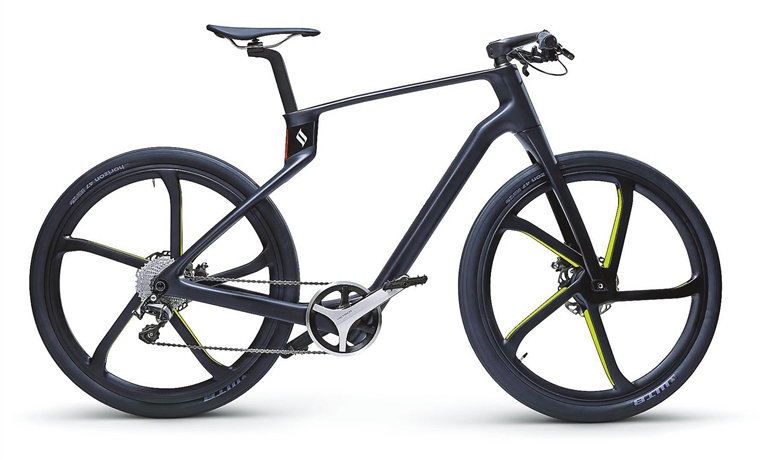
Arevo, the little-known manufacturer in the United States, has launched a new bike brand called Superstrata. Unlike most of its competitors, which build carbon fiber frames with multiple parts or pieces, the company has developed “a true unibody construction” that has no visible seams or welding marks. “This piece comes out as a single piece from our machines,” said Sonny Vu, CEO of Arevo and the former CEO of wearables maker Misfit. “So there’s no glue, no joints, no bolts, no laser welds, none of that stuff. If anything, things are shaved off in the post-processing.” Superstrata frames won’t be a single piece, though. The team is planning to print the main portion of the frame — which doesn’t have a traditional seat tube, creating an open diamond shape — and front forks separately. Still, it’s an impressive design feature that catches the attention of other cyclists and road users. The company will use additive manufacturing to build two similarly-shaped bicycles: a standard US$2,799 “Terra” model, and an electrified US$3,999 “Ion” version. That might sound expensive, however a carbon road bike can cost anywhere between US$1,250 and US$12,500. According to Superstrata, 3-D printing offers a couple of crucial benefits. For starters, each bicycle can be printed to suit the exact dimensions of the rider. The company is promising “over 500,000” possible setups that account for the customer’s height, weight, arm and leg length, as well as their preferred riding position and level of frame stiffness. Most bicycle manufacturers, for comparison, offer a handful of frame sizes that account for most rider heights. 3-D printing doesn’t require any expensive molds. The process requires fewer humans, too, than a traditional carbon fiber frame. “The materials for carbon composites are really expensive, but it’s really the labor that makes it expensive,” Vu said. Superstrata’s bikes won’t be indestructible, but they should fare better if you take a tumble or stand it up haphazardly outside a cafe. Superstrata is promising a 250-watt motor, which is effectively the industry standard for pedal-assisted e-bikes, that can rise to 350 watts in a pinch. It is promising 96 km of range on a single charge and an assisted top speed of 32 kmh, which will be software restricted to meet Europe’s lower 25 kmh speed limit. Superstrata’s Ion will be lighter than most of its e-bike rivals, though. The company has sourced some of its basic components — the tires, saddle and groupset, for instance — from third-party manufacturers. (SD-Agencies) | 
